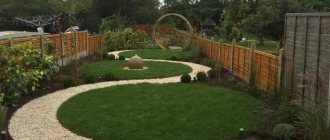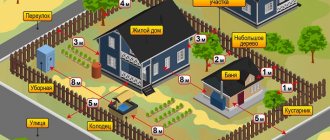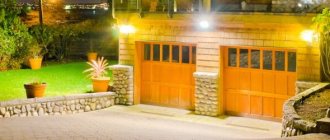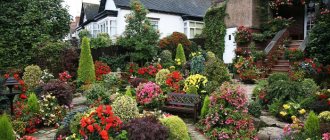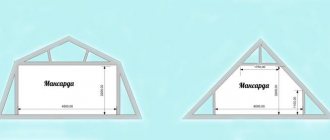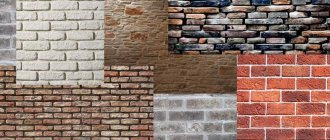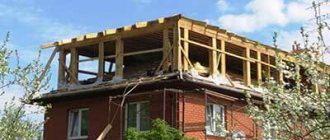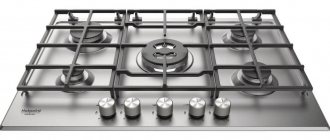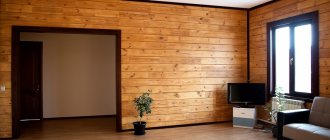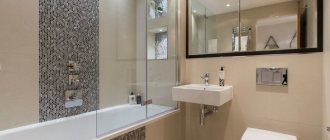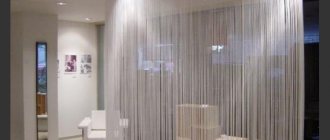Everyone wants to decorate their home in accordance with their taste preferences, so that it is beautiful, cozy, laconic or luxurious, fashionable or authentic. But furnishing a private cottage or dacha is only half the battle. No matter how beautiful a structure may be externally, it will lose half of its charm if it rises on a “vacant lot” - an undeveloped site with a rickety slate fence and sloppy garden beds in the background. Disappointing picture, right? The design of land plots with all attached buildings and sites is carried out by landscape designers. Although highly specialized decorators have become widely known only in recent years, this profession appeared in ancient times, when the need arose to decorate temple complexes and the estates of wealthy citizens. You can also develop a landscape design project for your site yourself. Beginners are often lost and don’t know which way to approach the task. In the article we will give a number of valuable tips to beginners in landscape design and show with examples what potential this design art hides.
Stages of drawing up a landscape project
Let's start with the simplest thing, with a brief algorithm for drawing up a design project for landscaping a suburban area. Do not delude yourself and count only on paper work with drawings; you will have to explore the property with a tape measure and a camera far and wide, but first things first. Design includes the following stages:
- Data preparation and collection. At this stage, measurements and topographic surveys are carried out.
- Sketch of utility networks.
- Choice of stylistic concept.
- Soil analysis (acidity, composition), groundwater depth. Study of existing vegetation and its preliminary distribution into two groups: that which fits into the design concept, and that which will have to be uprooted.
- A sketch of a drawing with the approximate placement of the main zones and buildings.
- Landscaping and proper choice of vegetation.
- Selection of materials to complete the idea.
- Lighting development.
- Choosing decor for each zone.
- Checking the compliance of the idea with the real capabilities of the site, conducting repeated “control” measurements.
- Final “approval” of the project.
It is not necessary to work with a drawing on paper. A lot of online assistants have been created for these purposes. After loading the initial data, visualizers will offer a rich assortment of landscape “filling”, among which you just need to choose the one you like. After completing the main work on the project, you can walk through the virtual site in the program, evaluate its merits and find weaknesses that are subject to immediate correction.
For those who are just taking their first timid steps in landscape design and are afraid of making a number of irreparable mistakes, professionals will help. Before bringing an idea to life, for a fee that is not commensurate with the cost of the finished project, designers can conduct a thorough, objective analysis of the work and provide valuable advice.
Important site characteristics
The most important characteristics of the land plot, which can greatly influence the design, include:
- Square. This is the first thing you should focus on. It is obvious that large-scale ideas cannot be implemented on a landscape of several hundred square meters. Such projects require scale.
- Form. Owners of asymmetrical sites will be the most unlucky. Square and rectangular areas are considered optimal. It is already more difficult to properly arrange triangular properties. How many acres are in a particular area can be found out from the purchase and sale documents.
- Relief. In this case, hills, hollows, and slopes are important. The nature of the relief will have a greater impact on landscaping.
- Availability of neighboring plots and nearby roads. This nuance will have to be taken into account when placing various objects for which certain distance standards have been established.
- Availability of utilities. This occurs in areas located in densely populated suburbs. If we are talking about “wild” nature, then all communications will have to be built from scratch, and this nuance makes designing as easy as a summer resident’s wallet, because such work will involve additional expenses.
Also take into account the presence of natural objects: ponds, rocky hills, trees.
What is included in a landscape project
The project must include:
- master plan of the facility , showing the overall picture of the designed activities (relief, placement of engineering and construction objects, small architectural forms, plantings, functional zones, balance of territory, etc.);
- dendrological plan of the object , reflecting the distribution of landscape types (volume-spatial structure), tree and shrub clumps, groups, solitary plantings, flower beds and the composition of panoramas and views, indicating the range of plants used;
- territory improvement plan (the so-called layout drawing), showing the connections of all planning elements (paths, platforms, stairs, ponds, buildings, etc.) to certain reference lines, carrying information about road surfaces and structures, the nomenclature of structures, small architectural forms , specifications, etc.; It is according to this drawing that construction work at the site will be carried out.
- a landscaping plan for an object (the so-called planting drawing), reflecting the assignment of planting areas and serving to map out the locations of planting trees, shrubs and flower arrangements.
If necessary, working documentation for engineering preparation is drawn up:
- relief organization plan (vertical layout) with a cartogram of earthworks;
- drawings of the installation of an automatic watering system, installation of drainage, installation of a lighting system;
- drawings of the installation of engineering structures: stairs, retaining walls, reservoirs, bridges, small architectural forms.
Upon completion of the design, an approximate estimate is drawn up for the entire scope of work for its implementation. In addition to the cost of work, it also indicates their sequence. Payment for the project is made after it is all completed on paper.
We design according to norms and regulations
First of all, you need to familiarize yourself with the standards for maintaining distances between buildings of different types. If any rule is neglected, then after inspection by fire or sanitary inspectors you will have to not only pay a fine, but also demolish the building and start construction work again. The list of standards is as follows:
- Between buildings made of non-combustible materials (concrete, reinforced concrete) and similar buildings, a distance of at least 6 m must be maintained. If a barn or summer kitchen is equipped with wooden floors, then they are erected at a distance of 8 m. For buildings made of combustible materials (wood), a distance of 10 m must be maintained. m.
- 10 m are left between similar buildings made of non-combustible materials with wooden floors. A distance of 12 m is maintained from wooden buildings.
- Full-fledged buildings made of combustible materials and frame floors are erected at a distance of 15 m from each other.
- A residential building must be separated from the street by at least 5 m.
- Water sources (wells, wells) are not dug near compost pits and street toilets. The minimum distance between them should be 8 m. A similar distance is maintained between the shower room and the residential building or cellar where provisions are stored.
- 12 m should separate housing from buildings where livestock are kept and from the latrine.
It is also necessary to take into account the permissible distances to the neighbors’ site from different objects. Tall trees and outbuildings in which animals are kept must be separated by 4 m from the fence. The house can be built a little closer - only 3 m, and other buildings at a distance of 1 m. Medium-sized trees are planted at a distance of 2 m from the neighbor's fence, and shrubs - at 1 m. For the most part, such standards are established so that large objects did not cast a shadow and did not interfere with other people’s gardening or vegetable gardens. Although building a latrine, a pig shed or digging a compost pit next to your neighbors is fraught with violation of sanitary standards, which can lead to contamination of the water on their property. You shouldn’t rely on the fact that they drilled a well near another fence.
Existing SNIPs for designing summer cottages
When creating a design project for a suburban area, you should rely on the following recommendations:
- The minimum distance between the street and any residential building on a summer cottage should not be less than five meters. The distance between the street and the utility block can be one meter.
- The distance between the windows of a residential building and neighboring buildings should not be less than six meters.
- The distance between the house and the utility block in which pets are bred must be at least 15 meters.
- The distance between one residential building and another residential building should be 6-15 meters.
By observing these parameters, it is easy to achieve the most comfortable ergonomics. The video will tell you other tricks of landscape design on six acres:
Choosing a color palette for landscape design
Using the color scheme, you can create a unique design on the most primitive summer cottage. Moreover, no special financial investments will be required to create a compositional palette of colors. To make it easier to compile the color scheme of individual objects, they are grouped into the following categories:
- Natural elements of the landscape. This group includes everything that was created by nature: reservoirs, hills, green spaces and even natural rock gardens.
- Architectural elements. These include all buildings on the site: from gazebos to the main residential building. In this case, the color of finishing materials and decorations matters.
- Details of the decorative and social landscape. This category includes man-made elements, the combination of shades of which is limitless. The group includes trees, shrubs, beds, flower beds (planted with your own hands), rock gardens, rockeries, artificial ponds, fountains and springs.
- Other design elements. These include garden paths, fences, decking, bridges, lanterns, small sculptures, and hammocks.
The last category is equivalent to small decor, if we draw a parallel with interior design. With its help, the color composition is finally polished, and, if necessary, the components can be easily replaced with others. In fact, “other elements” express the mood of the owner of the site, while the selection of other details is based on tastes, which, as we know, change only over time.
Options for planning a plot of 6 acres
Ready-made landscape design projects for a 6-acre summer cottage plot will tell you how to most efficiently organize a small household plot. If you wish, you can try to place a garden, a vegetable garden, a recreation area, and even a small pond on it.
What is 6 acres? This is 600 sq.m. Not much to accommodate everything you wanted. Therefore, it is so important that initially, before drawing up a landscape design project for a site, you need to clearly formulate and understand what you would like to see in your garden. Some will prefer to build a spacious house, arrange a barbecue area, and simply sow the rest of the space with a lawn. Others need a garden and a large vegetable garden. For both the former and the latter, the most successful planning option is to choose a geometric style, in which all buildings and plants on the site form a strict geometric shape. Such a device allows you to rationally use every centimeter of your summer cottage.
The main thing in this project is to position the house correctly. It is best to place it in the place where the building will least cast a shadow on the remaining ground. It is ideal when the house is built on the north side of the site. In this case, the residential building protects the plants from the winds. On the opposite side of it, but on the same line with the house, outbuildings can be placed.
When thinking through landscape design projects for a summer cottage located on six acres, you should not place a garage somewhere deep in the existing territory. The entrance to it will take up most of the usable area.
When planning the improvement of a plot of 6 acres, placing a barbecue area, it is useful to first know the wind rose in the given area. It would be correct to place the grill or stove on the windward side, then the smoke from the fire will not smoke towards the residential building.
If there is a significant difference in elevation, water will almost always accumulate in the lower part of the plots, so you should not plant a vegetable garden in this place. But if you make a high-quality drainage system, it is best to plan the landscaping according to the principle of open terraces. Each terrace in this case will become a separate zone. Identical paths will allow you to connect all the terraces.
Note! Arrangement of terraces requires the formation of strong strengthening of each individual zone. The easiest way to use it is to use concrete blocks.
Rules for arranging a plot of 6 acres
When developing a plot of 6 acres, it is important to take into account certain rules:
- Any clear boundaries of zones, made in the form of a fence, will create a feeling of confined space. If there is still a need to install a picket fence, it is best to immediately decorate it with a living fence, planting vines or climbing flowers along the fence.
- Pergolas covered with vines help make an open space more comfortable.
- When thinking through the design of a landscape design project, you should avoid row plantings. All garden trees will be properly planted throughout the area.
- Areas sown with lawns and framed with ornamental plants help expand the space. Lawns are best located either directly in front of the front facade of the house, or in the very center of the existing site.
- There is no point in making clear geometric paths in a small area. It is better to build smooth paths. They will force the gaze to slowly follow an arched path.
- Instead of the usual vegetable garden, it is best to lay out flower beds in the form of a circle. Such a vegetable garden will always look very beautiful, unusual, and all because it will look like a flower bed.
SNIPs help to significantly simplify the landscaping of a summer cottage. They spell out clear parameters for the location of the main objects. Experts have calculated in advance the standards that will allow you to use your six hundred square meters as comfortably as possible.
Popular stylistic trends
All stylistic trends for the design of personal gardens and summer cottages can be roughly classified into two groups:
- Historical.
- Modern popular.
If the first were formed over many years and have come down to us in the form in which they were embodied in different eras, then the second group is in constant motion, developing and changing. Historical styles include Dutch, Japanese, Mediterranean, French, English, Moorish, Colonial, Russian and Chinese. The popular group includes high-tech, minimalism, alpine (landscape analogue of a chalet), modern and eco-trend. In the latter case, the site is designed as naturally as possible, that is, natural asymmetry is welcomed. Minimalism uses dwarf trees, large spaces and a harmonious arrangement of rare decorative elements. High-tech is subject to strict rules: neat asphalt paths, simple geometry in the arrangement of small architectural forms, perfectly trimmed bushes. Modernism is based on the use of smooth lines, rounded corners, the use of modern materials and contrasting combinations of colors and textures. Alpine style is ideal for decorating relief areas. “Mountain” gardens are laid out on them, where the vegetation alternates with stone steeps and rock gardens.
Embodiment
You can count on success if work on the site is carried out strictly in accordance with the landscape design. The designer makes sure that the concept of the project is not violated. Control over the quality of work is the task of the foreman.
If your site is located in a forest, the landscape project must have an expert opinion from an organization specializing in tree surveys. The forest is a very complex living organism, the reaction of trees to the work performed does not occur immediately and their active death is observed in the period from one to three years after the completion of the work. A specialized organization, with its name and reputation, is responsible for the examination of the project. Just don’t be lazy and make inquiries about the organization’s qualifications and experience. It won't take much of your time. But you will save effort and money spent on litigation due to the death of trees due to improper work.
The customer can contact a company that will undertake the entire range of work on the site - from drawing up a landscape project to its implementation, or, having received the project, implement it on its own with the involvement of workers, or order the work from another company. In the latter case, as a rule, an agreement is concluded for phased completion of work or turnkey work, depending on the solvency and wishes of the customer.
A well-done project will avoid many mistakes and unnecessary expenses.
______________________________________________________________________
Types and varieties of fir trees in landscape design
Prickly spruce 'Echiniformis'
Most often, gardens and parks are decorated with prickly spruce, Norway spruce and Serbian spruce; somewhat less often you can see Canadian, black and Engelmann spruce.
Zoning of the site
In order for a landscape composition to look neat, without cluttering up individual elements, it must be zoned, that is, divided into separate functional areas on which certain objects are combined into groups. The average area includes the following zones:
- Rest area.
- Gardening and vegetable gardens.
- Group of outbuildings.
- Area for active recreation and games.
All zones are isolated from each other using garden paths, fences, flower beds or decorative elements.
Rest zone
The recreation area is designed for large companies and may include:
- Open or closed gazebo. The first option is used only in summer. Closed gazebos are glazed and can sometimes have an autonomous heating system, which makes them a comfortable place for winter recreation.
- An open or closed (under a canopy) area with a barbecue, hearth or barbecue.
- Equipped back patio with upholstered furniture, dining table, chaise lounge and poufs. This area is designed in the open air or decorated with a pergola covered with ivy, grapes, and clematis.
- Dining room without canopy. A dining table and chairs are placed in the area. Most often, it is located near the summer kitchen, so that you don’t have to carry plates of dishes far.
The recreation area is usually located next to the garden, which provides a beautiful landscape view, and with a playground so that the kids can be looked after without being distracted from the gatherings.
Garden area
The garden and vegetable garden are traditionally combined into one zone, although options are possible when the beds are laid out in one half of the plot, and trees and shrubs are planted in the other. The choice of location for green spaces is determined by the topography, the depth of groundwater and the type of soil. Experts recommend placing the beds on the “blind” side of the site, behind the house, so that greenhouse gardening does not become an eyesore and does not spoil the exterior of the house. If the soil is absolutely unsuitable for growing cucumbers and tomatoes, then the situation can be changed with the help of imported soil. In any case, the garden should look neat and well-groomed. In achieving this effect, so-called “high” beds, raised above the rest of the soil and fenced with wooden, plastic, and stone fences, will help. A garden can take many different forms. Sometimes it is a paradise with exotic flora, as if straight out of photographs of fashion magazines, and in other cases it is an imitation of a park with fruit and coniferous trees planted in rows, with benches for relaxation and neat paths.
Area with outbuildings
Outbuildings include a bathhouse, a summer kitchen, sheds for equipment, wood sheds, and buildings where pets are kept. In fact, this zone contains all the sites where any work is performed; there is no time to rest here, which is why the emphasis is on functionality rather than beauty. When developing a design project, attention is paid to the color of the finishing materials of buildings, their stylistic compliance with the chosen concept and light decoration with the help of flower beds, paths and fences.
Sports and games area
A sports and playground may include a tennis court, children's slides and swings, a system of horizontal bars and even some types of exercise equipment if household members are keen on physical exercise in the morning. Its placement is impractical in areas with a small area. In these cases, it is better to limit yourself to only compact swings and a slide. A sports and entertainment area is traditionally located in the backyard. It usually borders on a recreation area and a garden.
Competent zoning
In order for a country house to be comfortable and safe, buildings must be correctly located in the general design.
Experts recommend dividing the territory into 2-3 parts.
An example of zoning a summer cottage
First zone : outbuildings (garage, bathhouse, shed, toilet). Clarification: if the toilet is outdoor, it is recommended to locate it as far as possible from a well with drinking water.
It is better to hide the yard toilet in the depths of the site
Second : decorative landscape, recreation area (gazebo, barbecue area, flower beds). It can be placed in the far corner of the dacha.
Buildings made of natural stone fit perfectly into landscape design
Third : gardening, gardening. It is recommended to place productive beds or fruit-bearing shrubs as close as possible to a well or well with clean water.
An interesting solution - a compact vegetable garden in high flowerbeds
It is better to locate the second and third zones in the illuminated corners of the dacha. On any private territory there are shady places, where shade-loving plants are planted.
In the process of landscape design, it is advisable to immediately develop a general scheme for comfortable movement around the perimeter and think through convenient “routes” to frequently visited points. In large areas it is more difficult to develop such a scheme than in small ones.
Creating garden paths
When planning the location of garden paths, it is necessary to take into account the composition and topography of the earth; even in a small depression in the spring, when the snow melts, or in the summer after rain, puddles will form, which can increase over time. Periodically it is necessary to level the soil cover. This is an option for ordinary summer cottages.
Wooden mosaic looks gorgeous, but requires constant maintenance and has a limited service life
If you plan to use the property all year round, garden paths can be laid out with bricks, tiles, and stones. The choice of finishing material depends on the wishes of the owner.
Stone paths are much more durable, although much depends on the type of rock used
Paths on a summer cottage can be located in different ways, intersect, branch, connect and separate.
Registration of “wrong” pieces of land
A landscape design project for a narrow property is quite difficult to create. You can make it convenient and functional, but the aesthetic side of the issue will be more difficult to resolve. If the length is sufficient, you can place a barn, a recreation area, a garden, or a vegetable garden on the area.
If you want to design a dacha yourself, it is recommended to take the advice of experienced designers on working with narrow spaces.
- The surface is divided into 2-3 parts of the correct shape.
For example, identify them by placing the main buildings and plantings in these places. Can be divided using a hedge. The layout of a narrow territory should visually expand its boundaries - The location and design of paths on an irregularly shaped dacha property has its own subtleties.
Avoid straight lines; smooth curves will mask the main flaw of the surface and add elegance to it. The decoration should be original and unusual. For example, instead of tiles, the path can be laid out with wooden rounds. Tracks using combinations of different materials look original.
Registration of a plot of 6 acres
With the right approach, even on 6 acres of land you can place several main dacha areas.
600 square meters is not so much, so you need to take the development of landscape design seriously and use every free meter.
And on six acres you can place everything you need
A popular design style for a small dacha is geometric, that is, buildings and plantings form any geometric shape.
The main task of the developer is to correctly install a residential building. It should be located in such a way that the shadow does not fall on the remaining area. Most often, this is the north side. Additionally, the structure will protect the plantings from the wind. Opposite it you can place other utility buildings.
The northwest corner is the most favorable place to locate a house on a small plot
The garage is placed at the beginning of the land, so that the entrance occupies as little private territory as possible.
Landscaping a 6-acre dacha plot has its own characteristics; it is better to follow the general recommendations of experienced specialists.
- Installing a fence – marking clear boundaries. A small space creates a feeling of tightness and crampedness. If you can’t do without a hedge, you can decorate it with living plantings, for example, vines.
- To create a feeling of wide space, you should not plant plants in straight lines; it is better to distribute them along the entire perimeter.
- Lawns will visually expand the space. They can be located in the center, or in front of the entrance to the main house.
- Clear, straight paths will not be appropriate. The lines are smooth, “forcing” the eye to follow a soft arc line.
In order for the dacha to look harmonious, you need to correctly calculate the size of the residential building, shed, toilet, space for the garden and vegetable garden. The optimal size of the house, according to experts, is 5\6 meters; you can build a small terrace. If the owner does not plan to keep animals, there can be one outbuilding that will combine a shower and storage. If the toilet is outdoors, so as not to be conspicuous, you can plant shrubs or trees around it.
When organizing a garden, you must remember that it will grow over time; you should not plant a large number of seedlings in a small area, 5-6 are enough.
Neatly decorated garden beds
Vegetable beds are located in a sunny place. It will not be possible to plant much due to limited footage.
It is better to locate the recreation area near the garden. The trees will grow, casting more and more shade. You can build a small gazebo or simply install a table and benches.
Registration of a plot of 10 acres
A dacha plot of 10 acres allows the owner to decorate it in any style direction, placing everything necessary and necessary. In this case, it is possible to use the help of specialists or develop a landscape design project yourself.
At the beginning of the design work, you need to decide on the style. The architectural form of the home, the choice of trees and flowers for the garden, plants for the vegetable garden, decorative elements, and geometric planting patterns will depend on it.
Organization of a recreation area in the English style
On 10 acres, the English style looks harmonious. Its distinctive feature is the natural placement of elements. All vegetation: trees, flowers, bushes, greenery, is planted in tiers. But there should be a lot of plants, due to this the relevance of symmetry disappears. The paths and paths are winding and neat; if the terrain is changeable, a natural reservoir is built.
There is no need to select plants; almost anything will do.
Japanese style is relevant for a dacha of 10 acres. It provides for the presence of an artificial reservoir, it is allowed to install several decorative elements, stones, and lanterns are hung near a residential building.
The beauty of a Japanese garden lies in the balance and harmony of forms
There should not be a lot of decor; restraint is an important characteristic among the Japanese. Plants are preferable to calm ones: juniper, dwarf pine.
The Mediterranean direction is suitable for registration of ownership. It is characterized by wicker furniture, flower pots, stone-paved paths, a gazebo “buried” in greenery, and a small fountain.
The Mediterranean style is characterized by an abundance of plants placed in flower beds, pots and pergolas
For most people, the concept of “dacha” is associated with the concept of “vegetable garden”. Modern design solutions do not imply the presence of traditional beds in the project, therefore, in order not to disrupt the stylistic order, experts offer alternative options.
| Vertical vegetable garden | A modern analogue of traditional planting. Pallets, shelves, flowerpots, and buckets are used to place plants. |
| Modular beds | They are more compact, their appearance is neater and neater, and they are easier to maintain. |
| Vegetable garden in the garden | Vegetable seedlings are planted in flower beds next to the flowers. |
Registration of a plot of 15 acres
If a plot of 6 or 10 acres is considered small and modest, then a property of 15 acres is already a medium-sized property on which an individual can afford to place almost anything. The ideal shape is 30/50 meters.
Layout of a plot of 15 acres: 1 - house, 2 - garage, 3 - utility block, 4 - parking, 5 - terrace, 6 - barbecue area, 7 - children's playground, 8 - greenhouse, 9 - garden with tall trees, 10 - alcove
Landscape design of such footage implies a residential building, garage, barn, recreation area, garden, vegetable garden, playground.
The entire perimeter must be maintained in the same style. It depends on the geometric shape. If it is a regular rectangle, you can safely design it in a classic, regular style. Characterized by straight lines, everything must be precise and symmetrical.
If the property has an irregular shape, for example triangular, a landscape style will do. In this case, the laws of symmetry are irrelevant. But you shouldn’t think that you can do everything as you have to or as it turns out; competent organization is necessary. This type of design involves the presence of an artificial pond, fancy, unusually shaped flower beds, and decoration with natural materials.
Young plants are planted taking into account their growth
If the buildings and decorative elements are distributed correctly, there will be room for a swimming pool or sports ground. It is better not to plant trees around the living space; over time they will block natural light; you can replace them with shrubs: jasmine, juniper, lilac. There are currants, gooseberries, and raspberries in the garden. An apple or plum tree is planted next to them.
A recreation area can be placed in any part of the land. Some people like it to be in the sun, others, on the contrary, relax in the shade and coolness. When installing a barbecue, designers recommend taking into account the direction of the world so that the wind does not “drive” smoke into the living space.
Placement and design of the garden
The most beautiful gardens are in China, so before you start planting yours, it is recommended that you familiarize yourself with the recommendations of this people. It is believed that this place should look like a single organism, everything is natural, organic.
Each element of a Chinese garden occupies a specific place and has its own meaning.
The edge trees are planted in a strict straight line, with low specimens in the middle, and the paths are smooth and soft. The priority is red, blue, white, pink. In the central part they build an arch of flowers, made with their own hands.
Using sculptures in design
Garden sculptures are made from ceramic, bronze or polymer resin. Some owners make their own figurines from wood or steel.
Sculptures will add originality and uniqueness to the garden
They can be simply a decoration, or they can carry some meaning and be useful: a vase or a fountain. It is not necessary to decorate the perimeter with large specimens; miniature ones are also suitable.
Garden paths and lawn
Garden paths are mainly used for zoning a site. On the sides they are decorated with low fences, border flower beds, parterres, ribbon flower beds and mixborders if the path is adjacent to a solid fence. Paths are made of pebbles, crushed stone, large flat stones, wood cuts, boards, concrete, bricks, pieces of ceramic tiles laid out using the mosaic method. Lawns are planted in areas free of buildings, since a grass carpet looks more impressive if it occupies a large area. A similar lawn is located on the approaches to the recreation area; in the summer it can be used as a field for mini-football. In addition to the traditional short-cropped lawn, there is also a Moorish version. It does not require special care and is a cute medley of field herbs, sometimes reaching waist height.
Basic landscape design styles
Projects of a summer cottage are developed taking into account the opinion of the owner. The most popular landscape design styles:
- classic;
- English;
- country;
- French;
- Japanese (and other oriental);
- high tech.
Landscape design allows you to create a garden in a particular style using a set of elements.
You may be interested in: Detailed layout of a plot of 8 acres: competent zoning of space
Classical
The basis of the style is rationality and strict orderliness. The classic includes straight paths, a flat area and orderly rows of bushes, as well as a central location of the fountain, natural stone and regular geometric shapes. An important aspect is that in order to preserve the original appearance of the garden, it is necessary to constantly work on it. Once every two weeks, you need to mow lawns, shrubs, and clean flower beds and flower beds from fallen petals and leaves. It is also necessary to promptly remove dead plants, replacing them with new ones. If you follow the rules of care, the garden will be the embodiment of grace and triumph of colors.
English design
The English landscape style is as close to naturalness as possible. The layout does not require strict adherence to geometry, and natural elements are harmoniously integrated into buildings and structures on the site. To maintain a clear boundary between the tiers of green spaces, it is necessary to regularly trim shrubs and trees. The project involves a combination of comfort and restraint, and chairs made of wicker furniture, hammocks, ceramics and large flowerpots help in this. The appearance of the garden takes on smooth shapes and unclear boundaries.
Japanese
The purpose of a Japanese garden is to create an atmosphere of spiritual solitude and tranquility for its owners. Artificial materials are not used in the layout, and geometric regularity is replaced by natural shapes and natural elements. Features of landscape design:
- the site plan is made asymmetrically;
- water source;
- vegetation;
- a natural stone
- bamboo fences.
Stones are actively used in landscape design. Their location has a semantic meaning, and the water source is located according to certain rules. Japanese motifs can be identified by the smooth transition from one color to another. Due to this, the landscape acquires the unique sophistication of the East.
High-tech landscape style
Landscape design for garden decoration is high-tech, a relatively new style, simple and harmonious. Designing such a site allows you to realize any of the architect’s fantasies: non-standard shapes and structures, original options for arranging all elements over the area.
This layout uses modern materials:
- plastic;
- glass;
- metal;
- polycarbonate;
- composites.
The landscape design features a noticeable contrast of shades, original lighting elements, and the use of carefully processed wood and concrete. A variant of the original element is a mirror in the garden.
Minimalism in garden design
The design of the site in the style of minimalism allows you to leave free space in the area. In this style, form prevails over color. Traditional materials are used: wood, stone, plastic. Each element is considered along with the others. Only functionally important components are selected for design. Traditional lawns are often replaced with gravel beds. The layout is geometrically correct.
Artificial ponds - an element of landscape design
What area is complete without a pond? In rare cases, a stream flows through the property or there is a small natural pond nearby. If the landscape is devoid of natural water veins, then they will have to create an artificial alternative. The most economical option is a pond. It will require minimal care. The pond is populated with aquatic flora and sometimes fish. The water feature harmonizes with minimalism and Japanese style. Pleasant sounds of murmuring water will come from fountains and their more complex versions - cascades. To equip such a reservoir, you will have to purchase a special water pumping system, which will consistently “eat” electricity. The more complex the design and the higher its power, the more liquid it can distill. Swimming pools are installed in luxurious homesteads. This personal swimming pond combines well with a bathhouse. You can steam in it and then cool off in the cool water of the pool.
The theory of developing landscape projects for a site with your own hands
The main stage in working on landscape design is the development of an artistic project and an action program for its implementation. To do this, a sketch of a plan for the placement of compositions, architecture and main objects of the park or garden is created.
Example of a landscape project diagram
When drawing up a planting program, the architect must analyze and take into account the following in his work:
- When planting plants, you need to take into account the group nature of this process. Plants of the same species or related genera should be planted nearby. Otherwise, the territory will take on an empty and unfinished appearance.
- When planting plants, you should not use straight lines, since this does not provide the opportunity for the formation of bushes. This arrangement creates an unnatural appearance that should be avoided. But at the same time there is no need to upset the balance of the overall composition. Everything should be harmonious.
Proper organization of space allows you to place separate areas within a park or garden where you can relax with family and friends, and areas that provide the opportunity to spend time alone, alone with your thoughts.
Example of visualization of a garden design project
Elements that are used to decorate the territory of a park or garden with your own hands are divided into main groups:
- Buildings or structures of an estate, which, as a rule, are the center of the entire project. In this case, the main task of the designer becomes the analysis of existing objects and the subsequent smoothing, softening of the sharp and strict geometric shapes of the building. Moreover, these can be entire complexes of buildings, made in different styles and having very different purposes. Then the specialist’s work becomes significantly more complicated.
- Grass covering for the formation of lawns.
- Green plantings of trees and shrubs, as well as flowers. These can be individual plants or entire compositions.
- Large decorative elements: water features (streams, man-made lakes, fountains, aqueducts);
- stone objects (large stones or compositions of piles of stones, sculptures).
Do-it-yourself development of a landscape project for a site begins with the following work:
- Planning activities for landscaping the estate
- Creation of projects for the placement of water bodies;
- Placement of a garden path;
- Analysis and preparation of a landscape lighting plan;
- Development of a program and construction of a drainage system for the facility.
Site lighting rules
Area lighting is divided into three categories:
- Basics. This group includes a set of lighting fixtures near the porch and near outbuildings.
- Additional. Lights along the paths, which are necessary for free movement around the site at night.
- Decorative. This type of lighting emphasizes the beauty of individual elements of landscape design, which do not serve any “useful” function and are installed solely for the sake of a pleasant appearance.
Powerful lamps are installed only in main lighting fixtures. For decorative sources, light, diffused light is sufficient.
An economical solution would be to purchase lamps powered by solar batteries. Such a light source, of course, will not be enough for the whole night, but they will be able to work uninterruptedly for 3-5 hours in pitch darkness.
Landscape design
Algorithm
At a meeting with the customer, we jointly draw up a design brief.
After receiving the initial materials (topographic plan, building designs, etc.), we prepare a preliminary sketch (concept). It includes a plan diagram, a selection of analogues, texts and diagrams necessary to explain the presented idea. If the concept is accepted, we refine it and develop a project. A preliminary landscape and garden design includes a site plan, illustrations and construction cost estimates. When we receive a contract to carry out work according to our design, the second half of its price is counted as a discount. If a landscape design task is changed after it has started, the price increases by 30%; with additional corrections (more than two), the price also increases.
Terms of preliminary design
The standard period for developing a sketch (before the first submission) is one month, excluding time for edits.
Project and working documentation
Complex objects will not do without landscape design with the preparation of drawings at the “design” and “detailed documentation” stages. During the design process, the landscape design conceived at the concept or sketch stages is refined. The project allows you to build a complex landscape object with high quality, on time, and with a predictable budget.
The timing and cost of the work are determined by the area of the site and the complexity of the task. The standard cost of a detailed design of a site is three times higher than the price of a preliminary design. Advance 50%, final payment upon completion of work. If you enter into a work contract, the final payment for the project is deducted from the first advance payment for the work.
As-built documentation
Landscape design does not end with the delivery of a detailed design. After completion of the work, information should remain about how communications were actually laid, paths were laid and plants were planted. This may be useful for possible reconstruction of the site. Upon delivery, we provide the customer with as-built documentation, which contains all the necessary information about laid communications, planted trees, shrubs and perennials, etc.
Examples of landscape projects
What does the finished landscape project look like? How to evaluate a landscape solution? Sketch designs can differ greatly in the form of presentation and in the methods of conveying the look, sensations, and volumetric-spatial solution of the future landscape. A master plan is being developed for all facilities. Illustrations showing the site after work is completed are done in black and white graphics or watercolors, in the form of a three-dimensional model on a computer or in a video from this model, which is posted on YouTube. Below are excerpts from several projects we have completed.
The project is done. What's next?
After the design is completed and the project is ready, an equally important stage begins. Based on the site design, you can begin constructing a landscape, performing landscaping, planting plants, starting with large trees, laying communications, and installing lighting fixtures.
It should be borne in mind that a landscape project does not deal with the strict geometry of walls and the sizes of sofas known in advance, as in interior design, but with the diverse appearance of natural materials, so very rarely a drawing can be carried out without adjustments on site. Therefore, participation in the construction of the garden by the authors of the landscape project is a prerequisite.
Paving areas, planting large trees, tracts of shrubs, flower beds - all these final stages of landscaping and landscaping depend on weather conditions. Therefore, landscape construction must take into account the optimal timing of planting, minimum temperatures for working with materials and other seasonal restrictions. More about landscape work
Based on the project, the construction of the landscape can begin. More about landscape work
Don't forget about decorative elements
The landscape of the site is “cut” using decorative elements. They do not have a single classification, but conditionally these details can be divided into two large groups:
- “Living” decorations, that is, green spaces.
- Other details.
“Living” decor includes flower beds and all kinds of compositions from shrubs and trees. These can be flower beds, borders, tapeworms, solo plants, mixborders, wings, topiary, labyrinths, multi-level plantings, rose gardens, arabesques, rock gardens, rockeries, flowerpots. Other decorations include benches, small architectural forms, sculptures, ceramic animal figurines, bridges, pergolas, platforms, trellises, arches, and garden furniture. The choice of decorative elements directly depends on the style of the site. For example, a wooden cart with flowers and old wheels will emphasize the carelessness of rustic or Russian styles. A luxurious metal bench with forged elements will suit the modern, English or classic styles. The fountain, buried in flower beds and decorated with sculptures, will ideally fit into the framework of the French style.
Additional decorative elements
The landscape design of the site includes various elements for landscaping. Each detail takes its place in a single layout. The development includes tools and techniques that allow you to give a unique aura to individual corners of the garden.
You may be interested in: Competent planning on a plot of 6 acres
Artificial reservoirs
A decorative pond is a bright accent in a landscape design project. A natural and attractive look can be achieved by:
- decorating the banks with stones;
- arrangement of bridges, grotto;
- unusual shapes of lakes;
- asymmetrically planted aquatic plants.
The sculpture on the shore and lighting will add a special mood. In order for the artificial reservoir to fit into the composition as well as possible, the layout and location should be thought out before the landscaping of the territory begins.
Living and decorative fencing
Hedges are one of the best elements of planning a cozy and private environment in garden design. They protect from noise, dust, and wind. They also create a decorative labyrinth, alleys, and frame paths.
In landscape design, the choice of plants is varied:
- thuja;
- jasmine;
- spirea;
- hawthorn;
- boxwood;
- rose hip;
- spirea;
- barberry.
Fences made of coniferous trees are popular in planning. They are easy to trim and stay well-groomed all year round.
Garden paths
Paths can give each area exclusivity. They fully complement the entire layout. Paths lead to mysterious corners of the garden and form platforms. They divide the territory into zones and set the tone of the composition.
Different materials are used for paving paths:
- natural or artificial stone;
- pebbles;
- tree;
- concrete, tiles;
- grass.
A varied combination of materials and laying techniques allows you to create paths with fascinating patterns that will amaze the imagination. The area will become more beautiful, and the layout will be different from the rest.
Lighting
Landscape planning of a suburban area includes a competent lighting network. Light is not only beautiful, but also safe.
Landscape lighting changes the perception of the garden in the evening, highlights the necessary elements and creates the desired effects.
The projects have different options for lighting technologies:
- soft diffused light for the recreation area;
- lunar illumination of individual paths;
- lighting of large trees;
- festive lighting design.
With a well-thought-out light design, it is safe to move in the dark. At dusk you can admire the bushes and flowers, and individual architectural structures.
Decorative designs
Landscape design planning includes gabion fences. Traditionally, the construction requires stone and mesh, and the filling is broken brick, tiles, and sawn wood.
Decorative structures are used to plan the garden:
- antique sculptures;
- forged pergolas;
- classic columns;
- arches;
- flowerpots.
Small architectural forms are designed to emphasize the uniqueness of the garden and individual elements.
In landscape planning, the main goal is to determine the main accents, and then improvise, using your imagination. But beyond imagination, it takes skill to create functional beauty through plants and structures. The main thing is to achieve harmony with the surrounding architectural structures, masking the shortcomings of the site.
What should you pay attention to?
Before starting work and viewing ready-made design projects for a summer cottage, you first need to determine the most important parameters that determine the quality and capabilities of the site. This will help create a competent layout, distribute the number and size of zones, and also give each zone the necessary functionality. So, you should pay attention to the following parameters:
- Relief . Each object has its own individual surrounding area, the topography of which must be taken into account. This is especially important when the territory contains ravines, hills and other irregularities that will either be included in the future design or will have to be eliminated by making a plain.
- Shape of the site . The traditional shape is rectangular, but it can also be L-shaped, trapezoidal and triangular.
- The soil. In the presence of fertile black soil, problems with planting and normal growth of various plants disappear, but if the owner discovers poor soil and various impurities in it, then the question arises of planting only certain plants, or importing normal soil.
- Groundwater and nearby bodies of water. Groundwater, like nearby bodies of water, requires careful development of the drainage system, which will protect the site from subsidence.
It is with these parameters that the creation of design documentation begins, unless, of course, there was initially a desire to use a ready-made landscape design project, which in the end still needs to be finalized, adapting it to the real conditions of the site.
Which style should you choose?
This question torments many people, because the variety of options makes their head spin, but you need to settle on one thing. Reviewing the landscape design projects of the photo site in the hope of identifying the most current styles, we identified the following directions:
- Classic . This is about a geometrically clear layout, symmetry, closeness to natural colors, fountains and ponds, as well as a lot of flowers and greenery. Decoration in the form of sculptures, gazebos, arches and various structures made of stone, wood or metal is also welcome.
- Country . This is a rustic style that is more suitable for those who are leisure-oriented. The style is distinguished by lush flower beds, small ponds and all landscape elements that are as close to natural as possible. Handmade decorations will look great here, which will only add color and personality to the area.
- English . We call it landscape. It is distinguished by smooth lines both in architecture and in green spaces. In such conditions, harmony between man and nature is achieved, since the emphasis is on maximum naturalness, vertical gardening, green colors and the obligatory presence of a reservoir.
- Provence . This is a French style, where aesthetics will be on par with practicality. This style is determined by clear forms, the presence of an orchard and ornamental plants in limited quantities. If we talk about materials, then brick will dominate everything here.
- Japanese . The philosophy of this style lies in the worldview, which, accordingly, should be reflected in the landscape. As usual, the Japanese style is relevant for small areas where you need to make the most of all the space. It is characterized by the absence of clear lines and geometric shapes, and the main components will be stones, vegetation and water. Abundant decoration, asymmetry and maximum naturalness of the environment are encouraged.
- Modern . A modern solution for a comfortable life, where the focus is not only on relaxation, but also on sports. That is, a modern landscape is a kind of additional open-air room where a recreation area, a tennis court, a swimming pool and anything else can be located. Minimalism and symmetry are appropriate here, and an emphasis is placed on the individuality of the owner, which should be expressed in decoration and other design elements.
- Chinese . The symbolism of each object is important here. The larger the body of water, the better. The landscape requires stones and a lot of greenery. The dominant trees will be pine, bamboo, peach and plum.
- High tech . Modern materials and technologies, asymmetry or symmetry at the owner’s choice, plants of unusual shapes, bright colors and many elements to accentuate attention - all this is about high-tech, where everything is aimed at the convenience of life, ease of caring for the environment and reunification with nature.
- Eastern . The most luscious style that will be an excellent choice for small areas. Here it is important to ensure an abundance of sun, a courtyard closed on all sides, an abundance of colorful flowers, gazebos and areas paved with tiles. A round pool can be a decoration for this style.
- Free . This is about a respectful attitude towards nature, which itself decides what style of landscape will be on a particular site. Maximum naturalness, local relief and smooth lines. That is, the intervention here is minimal, which should only be expressed in a slight adjustment of what nature itself has done. An excellent option for picturesque places.
